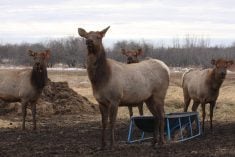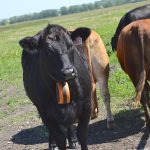Low prices for ginseng have cooled some of the initial excitement about growing this medicinal herb in Saskatchewan, but a few growers and researchers continue to learn more about its production.
John Kort, a biologist with the federal Prairie Farm Rehabilitation Administration Shelterbelt Centre in Indian Head, Sask., has completed a report called Winter Survival and Cold Tolerance of Ginseng in Saskatchewan. His project was supported by the provincial department’s Agriculture Development Fund.
“There are advantages and disadvantages to growing ginseng in Saskatchewan,” said Kort.
Read Also

Why feds imposed EV tariffs
Moe and Kinew have a fight on their hands when it comes to eliminating the EV tariff. Canada has to worry about pissing off the U.S. and Mexico and hundreds of thousands of auto workers.
“We have a shorter growing season than British Columbia and Ontario, where most of the Canadian ginseng is grown. This likely means lower yields. But our land prices are lower than in either of these provinces. Ginseng needs a dry area, which is an advantage of the Okanagan Valley in B.C., and one of our advantages as well. Ontario grows a lot of ginseng but also needs to use a lot of fungicides.
“Given these considerations, the main limitation to growing ginseng in Saskatchewan is our severe winter conditions.”
Native to Eastern Canada and northeastern United States, ginseng is a perennial crop that requires at least four years before harvest. Commercially grown ginseng normally overwinters under an insulating layer of straw.
Kort’s two-year project sought to determine the temperatures that would kill dormant ginseng roots and the mulch layer that would provide the best protection against prairie winters. Controlled-temperature tests were conducted in a laboratory by Karen Tanino of the University of Saskatchewan plant sciences department. Field tests with a straw mulch were carried out on a small plot at the shelterbelt centre, and on a portion of ginseng crops in Rosetown and Imperial, Sask.
First-year roots showed the most sensitivity to freezing temperatures and winter. The mulch test showed that a layer of 20 to 30 centimetres of straw would provide the best protection against freezing temperatures. This layer of mulch is also important in late winter and early spring as the ginseng roots become less resistant to freezing temperatures, especially if snow cover has disappeared.
“We also concluded that snow is as important as straw, so growers have to carry out snow management, as well as mulch with straw. For example, we added snow fences to two treatments to demonstrate the effect of snow trapping on soil temperatures. With the added snow cover trapped by the snow fence, there was a significant difference in the average minimum temperatures between the bare soil and the bare soil with snow fence treatments,” said Kort.
Kent Smith, a Rosetown grain farmer who has four acres of ginseng and allowed the project to be carried out on a portion of it, said he has learned from the study, especially the importance of snow management.
“I first seeded ginseng in 1994 and have had some winterkill due to the snow blowing off. Now I have snow fences, which really helped a lot,” said Smith.
He also continues to learn through trial and error. Some failures have resulted from standing water, which led to fungal diseases. He now grows ginseng in raised beds only.
“I harvested two-thirds of an acre last fall, and plan to have the root ground and processed into capsules, which I’d like to test market this year. I still have to buy some of my seed, but this year I also hope to produce enough seed to plant an entire acre in 2000. I will plant another acre this year, and harvest my first full acre of roots this fall.
“Although I haven’t had great success with ginseng, I plan to persevere, plant and harvest an acre every year. I just want to see what I can do,” said Smith.
To contact John Kort write to Prairie Farm Rehabilitation Administration Shelterbelt Centre, Indian Head, Sask., S0G 2K0 or phone 306-695-2284, fax 306-695-2568.














